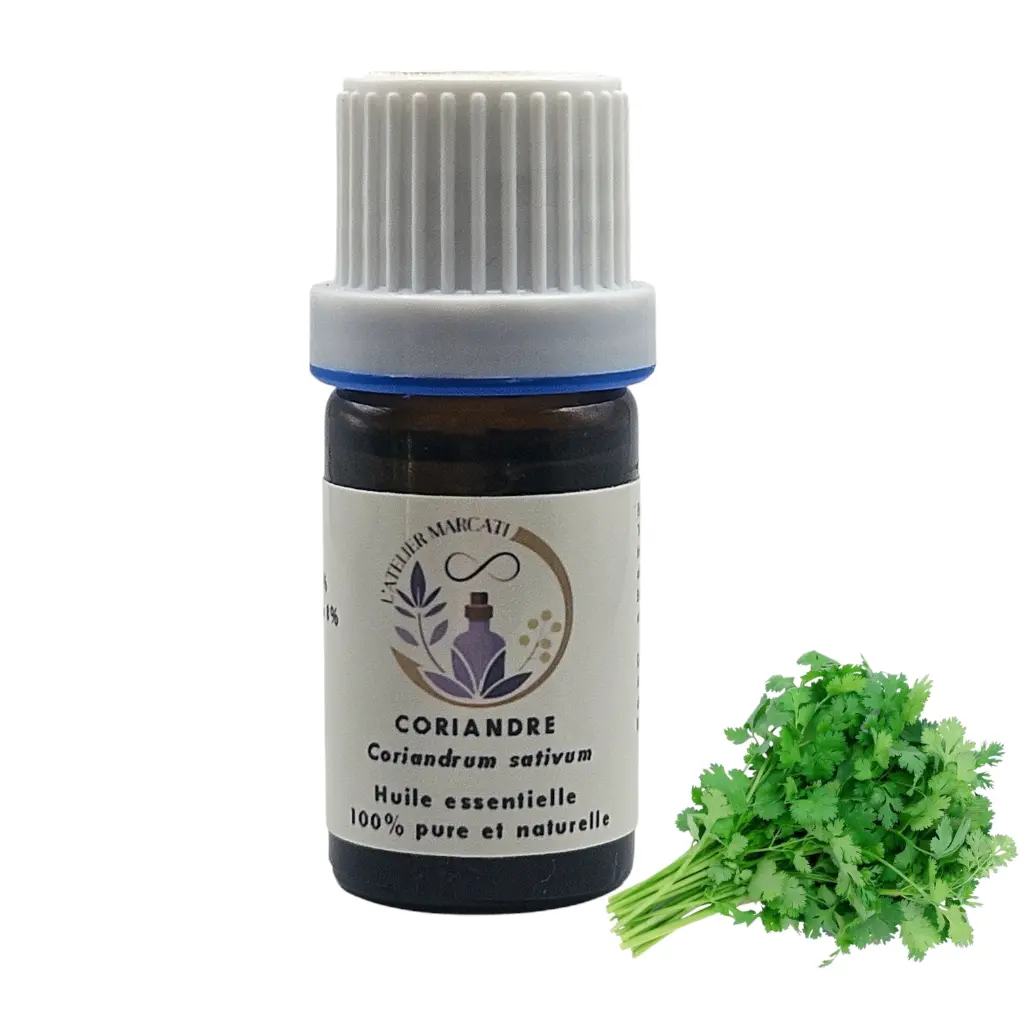Coriander essential oil
Botanical name: Coriandrum sativum

Chemotype and indications
Identity card
Name; Coriander
Botanical name: Coriandrum sativum
Distilled part: fruit.
Botanical family: Apiaceae.
Origin: India.
Chemical composition:
- - Ketones: Borneone (6%)
- - Coumarins (7 to 9%): Furocoumarins
- - Ester: Geranyl acetate (2%)
- - Monoterpenes (10 to 20%): gamma-terpinene, limonene, p-cymene
- - Monoterpenols: Linalool (70 to 80%)
Physical properties and therapeutic indications
- aerophagia*
- Anorexia
- anti-infective
- digestive antispasmodic
- Arthritis
- osteoarthritis*
- Asthenia*
- bactericidal
- cardiotonic
- carminatif
- Colic
- colibacillary cystitis*
- Dyspepsia*
- fermentative enterocolitis**
- flatulence
- Flu*
- Nausea
- neurotonic
- general antiparasitic* joint stiffness
- muscle stiffness*
- rheumatism (gout)
- circulatory stimulant
- digestive stimulant
- Virucide
Emotional, psychological properties and therapeutic indications
At low doses:
- Stimulant
- Nervous fatigue.
- Stimulates and supports memory.
- Psychological stimulant
At low doses:
- depression
Additional information
Dangers :
Dangers: Toxic EOs in high doses; Narcotic in high doses; May irritate the kidneys; Avoid alcohol consumption: risk of excitement, drunkenness and subsequent depression; sleeping pills; Prohibited for pregnant women
At low doses:
Euphoric**
General fatigue*
Legend: * strong, ** very strong; *** extremely strong (performance value for associated pathology)
Reference and bibliographical source: Lily BAYER and Dr. Hervé STAUB, (2013) “Detailed treatise on phyto- and aromatherapy”, Ed. P. 486.
AROMATHERAPY INDICATIONS AND USE OF ESSENTIAL OILS DO NOT REPRESENT A MEDICAL DIAGNOSIS AND DO NOT REPLACE A DOCTOR'S ADVICE OR MEDICAL TREATMENT!



